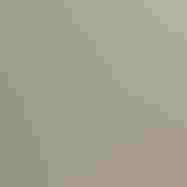
La página que intenta visitar sólo está disponible en inglés. ¡Disculpa!
The page you are about to visit is currently only available in English. Sorry!

Over the past century, urbanization has taken, fragmented, and transformed ecologically productive land with sterile lawns and exotic ornamental plants. We’ve introduced walls of glass, toxic pesticides, and domestic predators. The human-dominated landscape no longer supports functioning ecosystems or provides healthy places for birds.
Audubon’s Bird-friendly Communities strives to provide food, shelter, safe passage, and places for birds to raise their young, through our Plants for Birds and Bird-friendly Buildings programs. As we work to create healthy habitats, we also work to ensure safe spaces for our feathered friends. Check out some bird-friendly yard tips here and read on to learn more.
By simply choosing native plants for our yards and public spaces, we can restore vital habitats for birds in our communities and help them adapt and survive in the face of climate change. Audubon’s Plants for Birds program is designed to enable anyone to have a positive impact by planting for birds, right where they live.

Bring more birds to your home with native plants! Visit the native plants database to create a customized list of plants native to your area, get connected to your local Audubon and native plant nurseries, and help us get 1 million plants in the ground for birds.




Protecting birds and providing them with abundant habitat and safe passage is achievable with PROs – Proclamation, Resolutions and Ordinances. Connect with your local Audubon chapter, center, or sanctuary, to learn more about PROs for native plants and bird-friendly buildings or reach out to bfc@audubon.org.

Senior Program Manager, Plants for Birds

Community Action Manager

Even amidst the pandemic, Menunkatuck Audubon Society and its partners found a way to establish New Haven’s first native plant nursery.

By installing water-saving appliances and less thirsty native plants, this Colorado community saved 15 million gallons of water in just one year.

Spurred by a mass collision event, Audubon chapters and partners lead a Lights Out program during spring and fall migration.

Whether it's renting goats to clear out invasive plants or making a new assisted-living facility greener, Huntington-Oyster Bay Audubon is making a difference.
Let us send you the latest in bird and conservation news.
